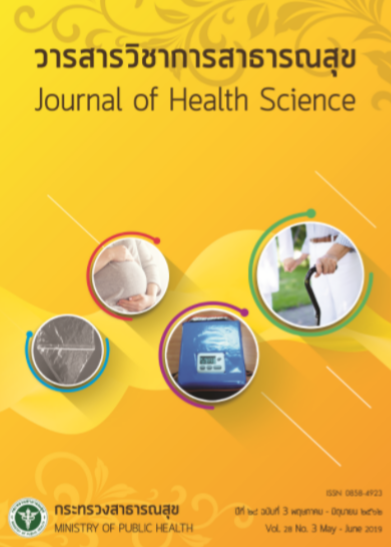Accuracy of Mammography and Breast Ultrasound at Chaoprayayommarat Hospital: a Retrospective Analysis
Keywords:
mammography, BI-RADS, breast cancer, breast ultrasound, accuracyAbstract
The purpose of this retrospective descriptive study was to evaluate the accuracy of the mammography and breast ultrasound according to the BI-RADS classification at Chaoprayayommarat hospital. It was conducted in 823 mammograms of a consecutive, unselected collective of symptomatic and asymptomatic women who came to Chaoprayayommarat hospital during January 2015, to June 2015. The BI-RADS was use for mammographic reporting and interpretations. Final assessment category ranging from 1 to 5 according to the following: category 1, “negative”; category 2, “benign finding”; category 3, “probably benign finding”; category 4, “suspicious abnormality”; and category 5, “highly suggestive of malignancy”. BI-RADS 1, 2 and 3 were considered negative and BI-RADS 4 and 5 were considered positive. Accuracy was determined by histopathologic findings or unchanged at least 24 months follow-up mammography. Total accuracy, sensitivity, specificity, negative predictive value (NPV) and positive predictive value (PPV) were also calculated. Of 523 patients, breast mass (62.91%) was the most common clinical presentations, followed by check-up (27.72%), mastalgia (6.31%), axillary mass (1.91%) and nipple discharge (1.15%), respectively, with mean age of 50.38 years. Based on the BI-RADS for mammography, BI-RADS category 2 and 3 (51.24%) representing benign and probably benign breast lesions were the most prevalent in this study. There were 345 negative studies (65.97%) and 178 positive studies (34.03%). Biopsies were performed in 208 of 523 patients (39.77%). Of these lesions, 94 were malignant and 114 were benign. There was 96.81% sensitivity, 79.72% specificity, 51.12% positive predictive value, and 99.13% negative predictive value. The total accuracy was 82.79%. In conclusion, breast evaluation by mammography, utilizing the BI-RADS classification, played an important role in the diagnostic assessment and screening of breast cancer. Benign breast lesion was more common than malignant lesion. The results of this study suggested that the combined mammography and ultrasound was very sensitive, but not as specific, with total accuracy of 82.79%, indicating benefit for evaluation of breast lesions and screening the female population to lower the misdiagnosis rate and reduce mortality of breast cancer. Further studies are needed to achieve improvement of diagnostic accuracy and cost-effectiveness of screening mammography in Thailand.
Downloads
Downloads
Published
How to Cite
Issue
Section
License
Copyright (c) 2019 Journal of Health Science - วารสารวิชาการสาธารณสุข

This work is licensed under a Creative Commons Attribution-NonCommercial-NoDerivatives 4.0 International License.







